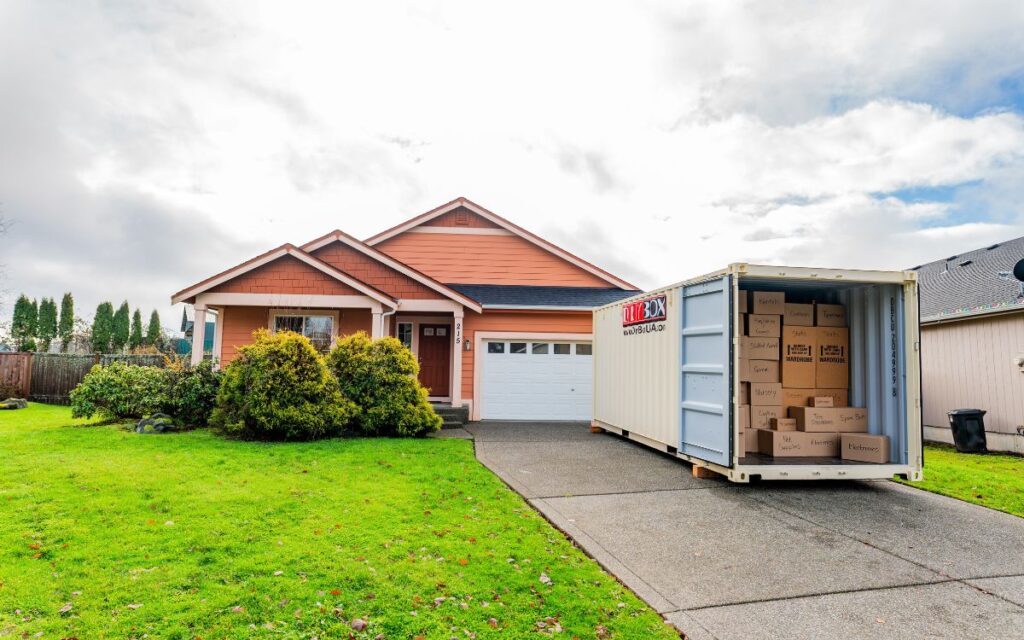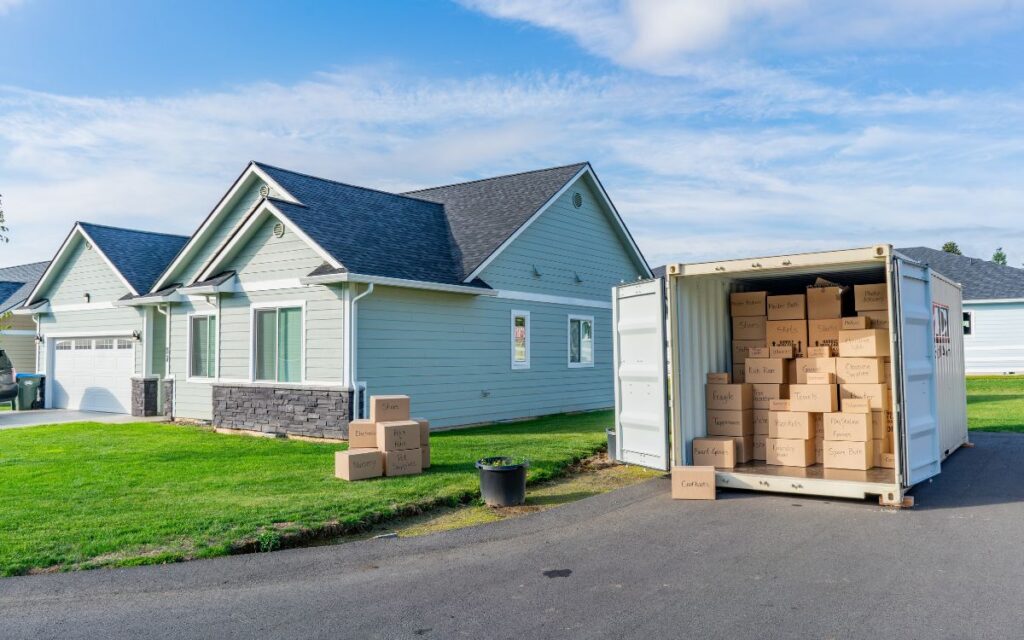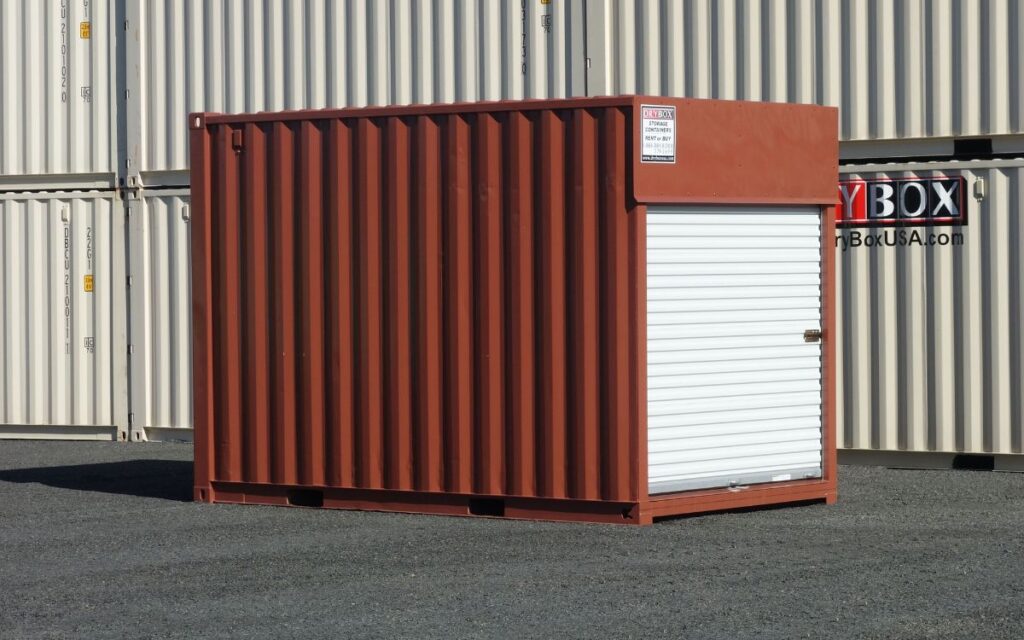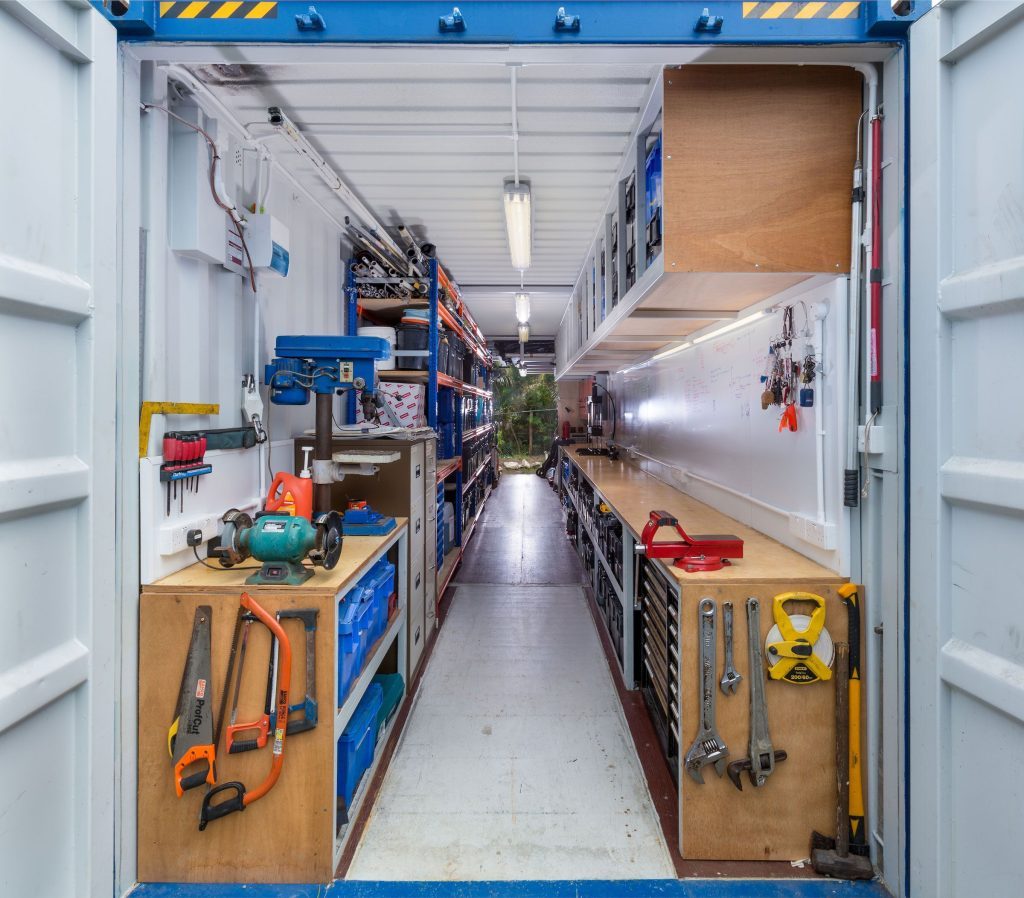Can You Use Shipping Containers for Storage? 3 Facts to Know

Shipping containers are taking the world by storm, being repurposed as homes, cafes, swimming pools, and more. Among their many uses, storage solutions stand out as one of the most practical and reliable. Whether for residential, commercial, or construction storage, shipping containers offer durability, versatility, and cost-efficiency.
This guide explores how shipping containers for storage outperform other options and the ways you can make the most of them for your specific needs. From sizing and modifications to comparing them with sheds and self-storage, we’ll show why they’re the ultimate choice.
How You Can Use Shipping Containers for Storage
You can store most items in shipping containers. But you’ll need a few tricks to make sure they stay in tip-top condition. By following these simple rules, shipping containers make excellent storage options.
1. Storing Household Items
Do not store flammable or perishable items in a standard shipping container. If required, you may be interested in refrigerated shipping containers for storage. Otherwise, you can prepare items as per below.
- Make a full itinerary and box similar objects together
- Use color-coded labels and a floor plan
- Use stacked plastic boxes with flip lids for easy access
- Cover wood furniture with protective oil and dismantle
- Rent specialist moving boxes for art
- Store mirrors and pictures frames standing up in bubble wrap
- Storing household items in a shipping container is perfect for renovations when you still need access to them
These items above will survive well in storage. However, there are more delicate items that you might want to store.
2. Storing Documents and Books
Temperature changes can cause paper to turn brittle and ink to fade over time. Therefore, we recommend keeping them in modified shipping containers for storage long-term. Temperature fluctuations can degrade paper products over time. Preserve books and documents effectively by:
- Filing loose papers in plastic file holders.
- Install shipping container shelving.
- Placing moisture absorbers in storage bins to prevent mildew.
- Using ventilated shipping containers for better airflow and temperature control.
You can also add extra protection with ventilation in your shipping containers for storage. We’ll talk in more detail about vents later in this article.
3. Storing Clothes and Shoes
While you can store most clothes in garment bags, some pieces need extra care. For example, if you don’t keep leather shoes correctly, they’ll have permanent creases or cracks. So, here’s how to avoid issues:
- Divide and wrap silk and wool clothing
- Include de-humidifier packs
- Use garment bags for clothes and acid-free paper to maintain their shape.
- Protect shoes with a leather conditioner and place them in airtight containers.
- For leather shoes, consider a shoe tree to retain their form during storage
People often think that throwing shoes in a box will suffice. It won’t. If you don’t want ruined shoes, store them with care.

What Shipping Container Size You Need
Choosing the right shipping container size depends on your storage needs and available space. Here’s a breakdown of the most common container sizes:
1. 10ft Container
A small 10ft shipping container is perfect for household items and select pieces of furniture. People often use these smaller shipping containers for storage in business.
In addition, gardeners and construction workers can use them to keep their tools safe. The smaller size results in much lower transport and delivery costs.
2. 20ft Containers
This size will equate to a single garage, so you can store a car alongside a few household items. Twenty-foot shipping containers for storage are also excellent options for motorbikes. A 20ft container is ideal if you are a small business looking to store excess stock. Or, a small family relocating.
We often see 20ft containers used in schools or event spaces for surplus chairs, tables, props, and equipment. They can hold between four to six rooms worth of belongings.
3. 40ft Container
Long or high-cube 40ft shipping containers are ideal for business storage or customized living spaces. For example, you can fit desks and computers for a medium business into one container.
You can also store items from a detached three-bedroom family home in a 40ft container. Knowing that these items are safe will make your relocation or renovation stress-free.

Shipping Container Modifications
There are various ways to change your shipping container to better suit your needs. These changes could be internal or external. Creating modifications will ensure that you have the ultimate personalized storage.
1. Doors
People often change the doors from traditional cargo doors into more stylish versions. The most popular door modification is a roll-up door. At Dry Box, we install steel outer frame heavy weather roll-up doors so that no water can seep in. The shipping container will look like a stand-alone garage.
Another popular option is the 18 gauge steel man door with a deadbolt and tamper-proof hinges. They are designed to be heavy-duty and yet offer easy access to personnel. They are ideal for long-term storage on your property.
2. Windows
Inserting windows would depend on what items you plan to store in your container. Harmful UV rays cause over 40% of furniture fading and color wastage. So, avoid windows if you plan to store antiques or other furniture in your shipping container.
However, windows are an excellent option if you plan to keep workout equipment inside. Skylights are the best modification if you are concerned about people peeping.
Commercial users often insert picture windows to create a bright space for showcasing and storing goods. There are several options, so think carefully about what you will store and whether you will continue using the items.
If you’re converting a shipping container into a tiny home, office, or relaxation space, adding windows is a fantastic way to bring in natural light. This not only reduces the need for artificial lighting but also creates a welcoming and uplifting atmosphere. Windows can make the interior feel larger and more open, enhancing the overall functionality and comfort of your space. There are several options, so think carefully about what you will store and whether you will continue using the items.
3. Paint
Another popular modification is much more about cosmetics than safety. Custom paint jobs on the exterior of your shipping container will seamlessly match the design of your location.
We also offer a color matching service, where we will paint your container the same color as any pre-standing building or structure. You could also choose vibrant colors if you want your shipping container to be a show-stopper. For example, if you use it to showcase products and want to stand out.
4. Insulation
We all love the hot, dry summers in Salt Lake City but know that the icy winters are just around the corner. Thankfully, the steel exterior makes shipping containers the ideal structure to withstand storms and snow.
However, with such temperature fluctuations, your stored items could become damaged. It will make wood furniture warp, plastic bubbles, and documents fade.
Therefore, it is crucial to consider insulation and temperature control within your shipping container. The most effective way to prevent this kind of damage is to insulate against it. There are four different types of insulation available:
- Fiberglass is the most economical insulation option for storage
- Closed-cell foam has increased efficiency, reduces airflow, and is water-resistant
- Insulation foam board is durable and cost-effective
- Rock wool or mineral wool insulation is for industries required to meet heat and fire standards
By including these modifications in your shipping containers for storage, you’ll reap the benefits for many years to come.
5. Ventilation
Summer temperatures in Salt Lake City reach 32-degrees, so consider a vent modification if you plan to store items at that time. Heat and moisture buildup can cause mildew damage.
Ventilation will reduce this risk and eliminate musty odors. You will need two vents in the door, front, or sides of your container for optimum ventilation. Louver vents are the most sought-after modification.
Roof-mounted, also known as turbine vents, are leak-free and work wonders in reducing moisture. These are also available with power but are more expensive. However, if you are storing irreplaceable antique furniture, it might be worth the extra cost.

Frequently Asked Questions About Shipping Containers for Storage
Are shipping containers good for storage?
Yes, shipping containers are excellent for storage. Their robust design, originally made for transporting goods across vast ocean distances, ensures durability and protection against external elements. Plus, their uniform shape makes them easily stackable and efficient in terms of space.
Can I use a shipping container as a shed?
Yes, many people repurpose shipping containers as sheds because of their strength and security. They can be an excellent alternative to traditional wooden sheds, especially in areas prone to harsh weather. With some modifications, such as adding windows or ventilation, a container can become a functional and long-lasting shed.
What should you not store in a shipping container?
While shipping containers are versatile, there are some things to avoid storing:
- Perishable Goods without proper insulation and temperature control.
- Hazardous or Flammable Materials without proper safety measures.
- Sensitive Electronics without humidity control.
- Living Animals.
- Anything Illegal.
Always ensure good ventilation and regular checks to maintain the items in optimal condition.
What are storage charges for a 40ft container?
Storage charges for a 40ft container can vary based on location, facility amenities, and rental duration. On average, monthly rental fees typically fall somewhere within a few hundred dollars. If you’re referring to port storage charges, it’s a different ballpark, and fees can accumulate daily. It’s crucial to compare prices and check for any hidden costs.
Are shipping containers waterproof?
Yes, most shipping containers are designed to be waterproof. After all, they’re built to withstand oceanic voyages. However, over time, wear and tear can compromise their waterproof nature, especially around door seals. Regular maintenance and checks will ensure they remain watertight.
How many years do shipping containers last?
A standard shipping container used for transportation can last about 10 to 12 years in active service. However, when repurposed and maintained, such as for storage or residential use, they can last upwards of 25 years or more. Factors affecting their longevity include their original condition, modifications made, the environment they’re placed in, and how well they’re maintained.

The Best Shipping Containers for Storage
Shipping Containers are an outstanding choice for secure and durable storage. Originally designed to withstand the rigors of global shipping, they are easily adapted to meet a wide range of storage needs. With options to customize size and location, you can tailor a container to perfectly suit your requirements.
Built to last for decades, shipping containers provide peace of mind by protecting your belongings from harsh weather conditions like snowstorms, rain, or extreme heat. Their durability ensures that your stored items remain in excellent condition, just as they were when you packed them.
Choose a shipping container for reliable and long-lasting storage, and rest assured knowing your goods are safe and protected. Our knowledgeable team at Dry Box is here to guide you every step of the way. Contact us today to discuss your storage needs or to get a free quote!









